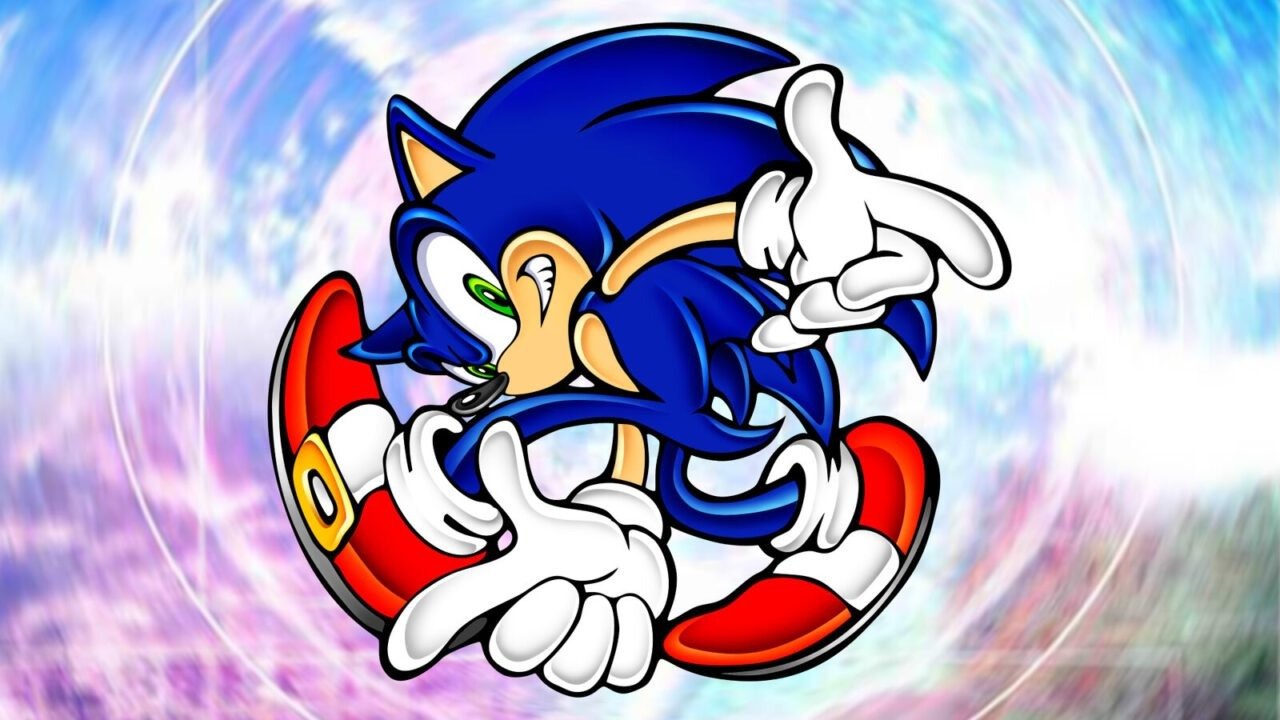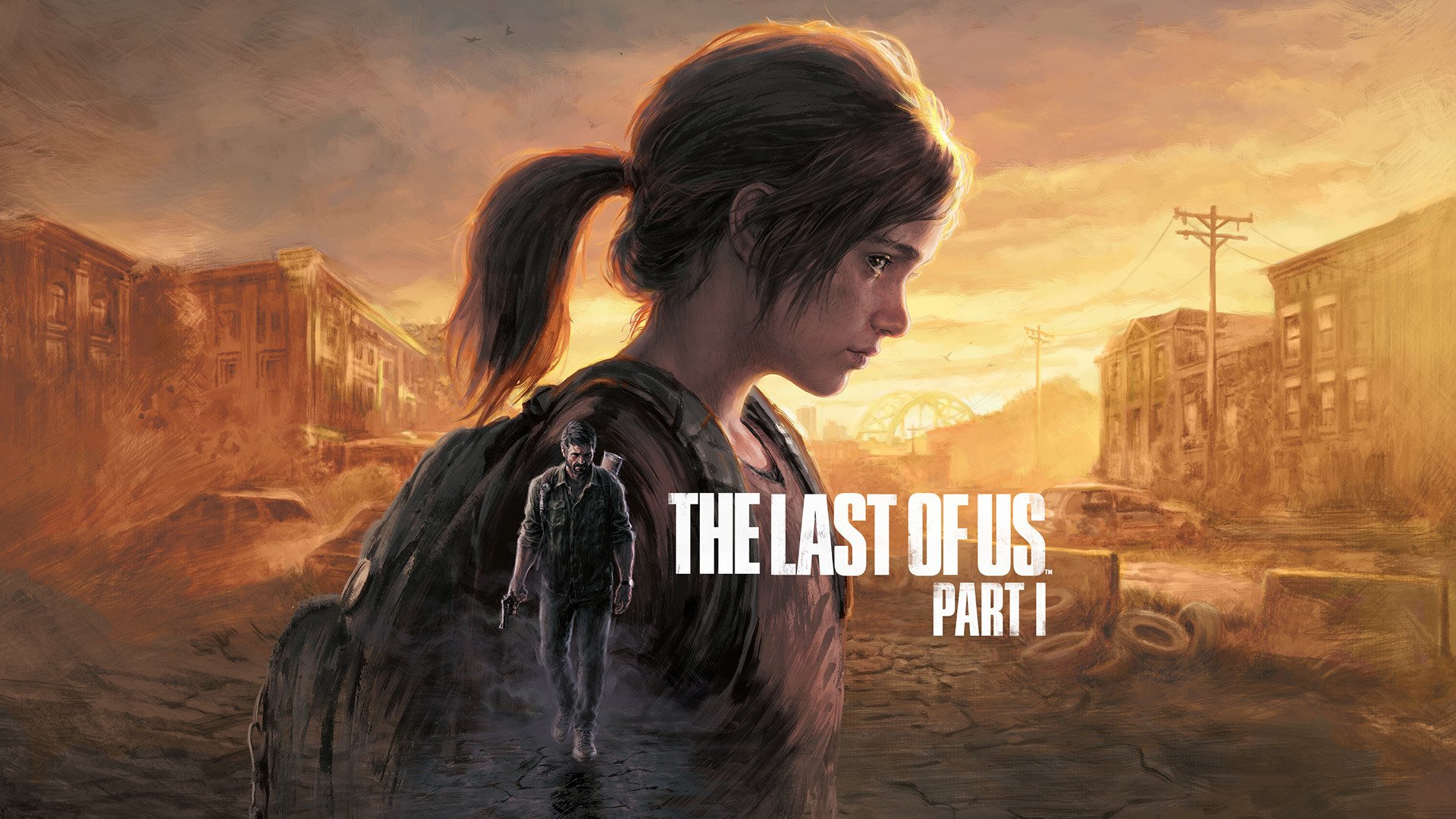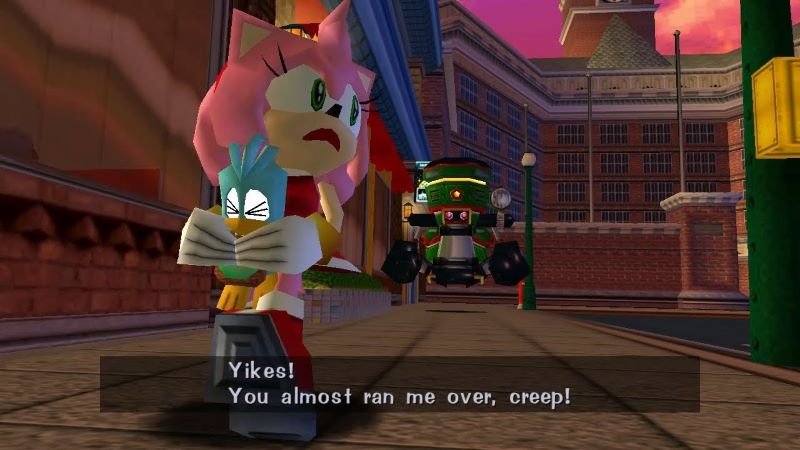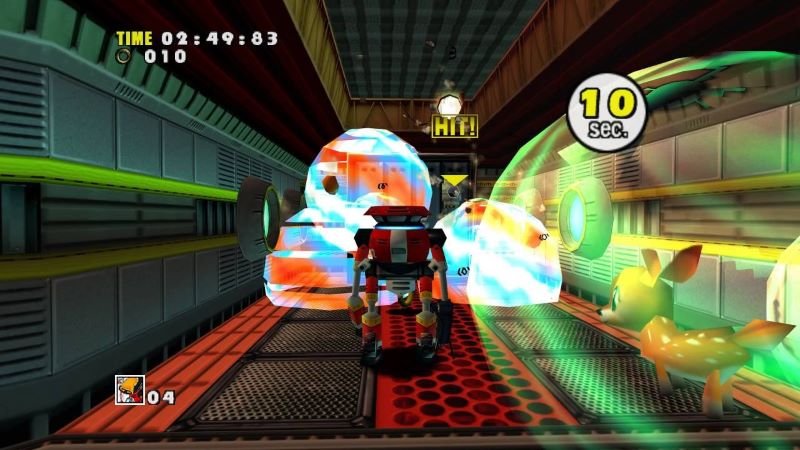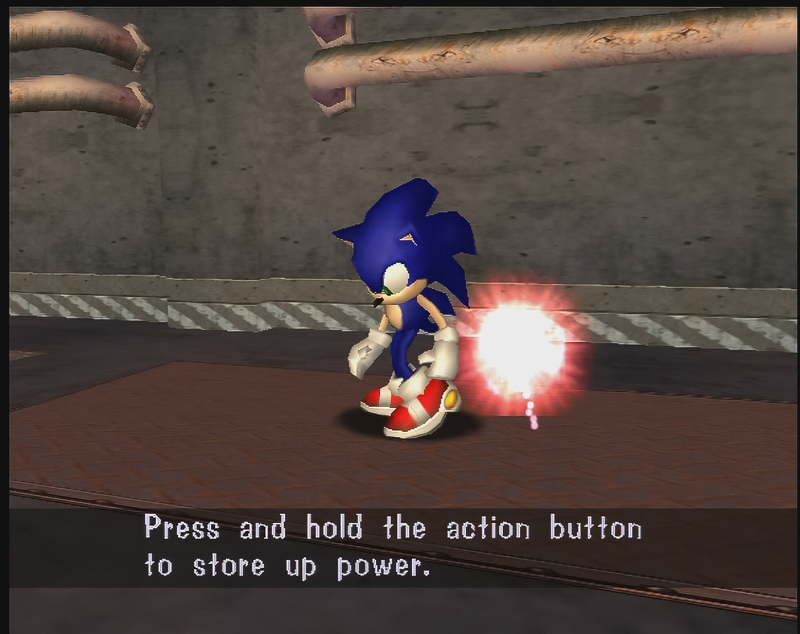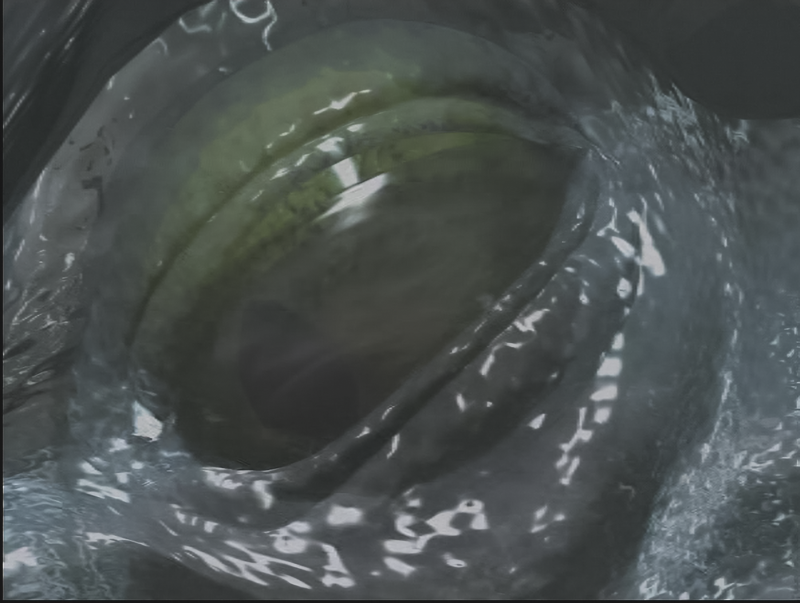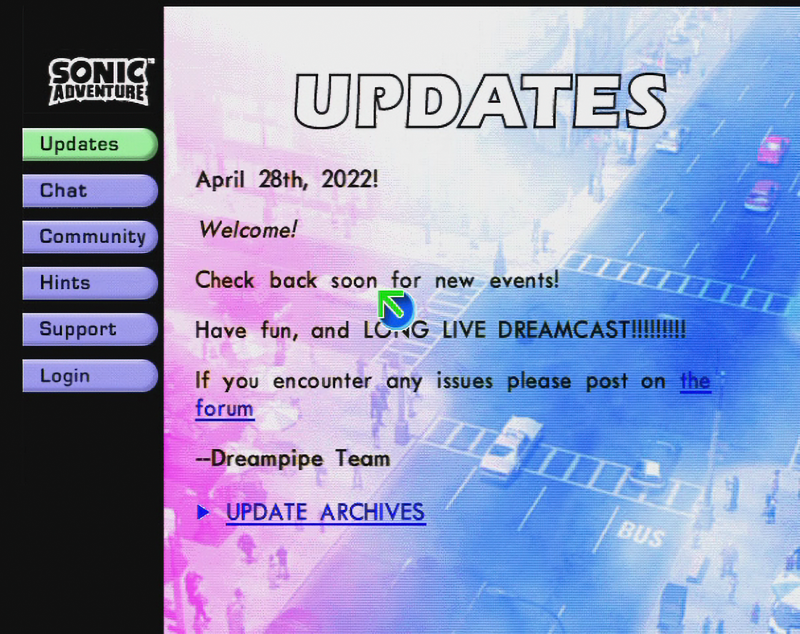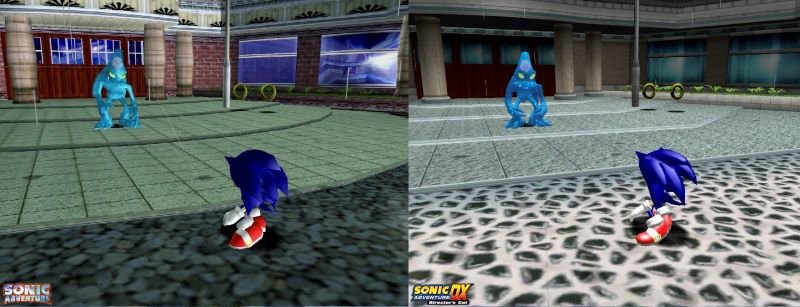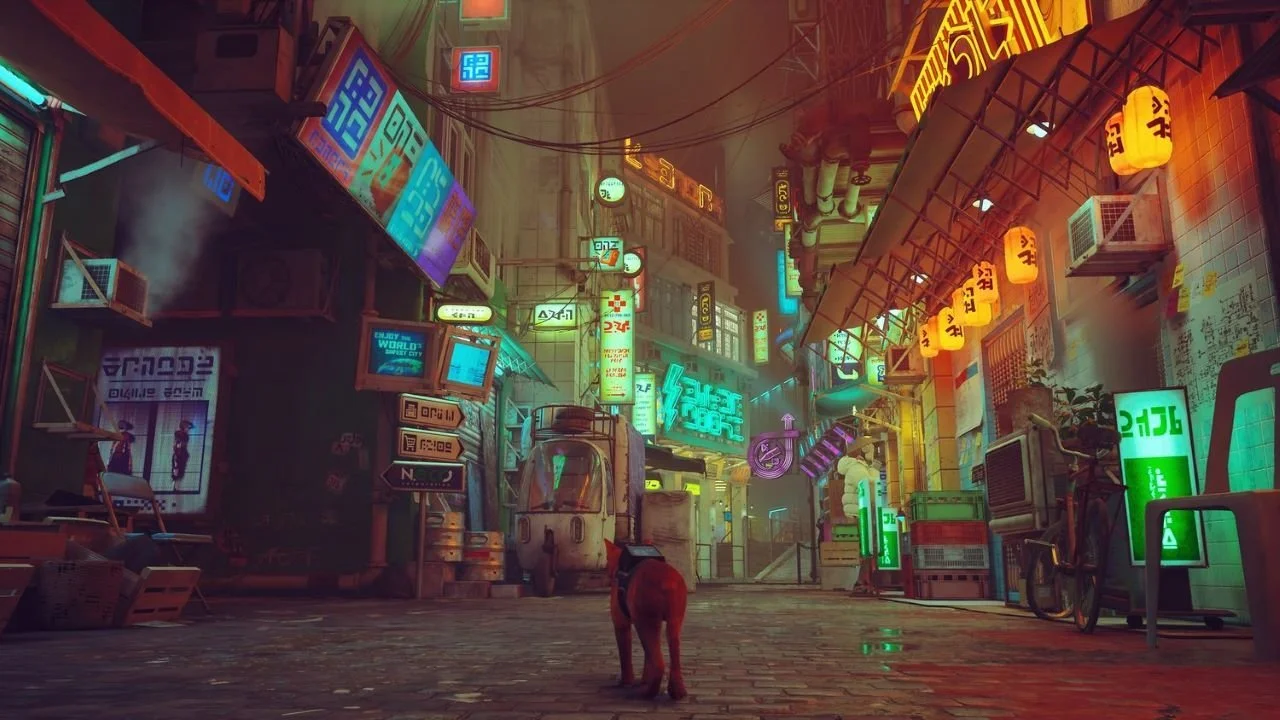Sonic Adventure: A Retrospective Review
While many Sonic fans greatly anticipate Sonic Frontiers’s release, it is important to look back at how far we’ve come since the blue blur made the leap to the third dimension with 1998’s Sonic Adventure for the SEGA Dreamcast. This is especially important with the upcoming title taking so much inspiration from the Dreamcast classic. The title has seen its fair share of criticism over the years, but it still holds up as a solid 3D title for Sonic. Sonic Adventure still holds up as a fantastic bridge from the classic Genesis/MegaDrive era of Sonic to the modern 3D titles of today, and it still stands as a template that future titles should follow.
Sonic Adventure features six playable characters: Sonic, Tails, Knuckles, Amy, Big, and E-102 Gamma. Each character has its own unique playstyle. Sonic’s gameplay features the high-speed action platforming that the franchise is known for—now in a 3D space! Players can use Sonic’s speed to explore the large zones, reach new heights, and improve their time as they complete each level. For his first true 3D outing, Sonic controls great! His movement is tight and responsive, and platforming is a breeze with him.
RELATED:
Tail’s gameplay is similar to Sonic’s, except with him, the goal of each stage is to beat the blue blur to the finish. The two-tailed fox has a satisfying feeling of speed, and his flight ability gives him access to shortcuts and paths that would otherwise be unreachable. These paths especially come in handy when trying to beat Sonic to the end. Like Sonic, Tails controls well.
Knuckles’ campaign is where things get different in the gameplay department. Whereas Sonic and Tails have a straightforward reach the end of the stage gameplay loop, in Knuckles’ stages, the goal is to collect the three pieces of the Master Emerald (a gem that controls the seven chaos emeralds and keeps Angel Island afloat) hidden in that particular stage. Knuckles is guided by a radar system and hints from the red glowing orb that appears to everyone in the game. While the echidna is no slouch in the speed department, his gameplay focuses much more on exploration than high-speed action. Nevertheless, Knuckles controls well, and gliding with him is an easy way to reach hard-to-find areas. It is also rather satisfying to punch enemies with him in addition to jumping on them.
Amy Rose, Sonic’s self-proclaimed girlfriend, makes her mainline playable debut in this title. She has a bit of a slower, more traditional platforming play style with a bit of an emphasis on puzzle-solving. Her goal is to reach the balloon at the end of each stage before the robot chasing her, Zero, catches her and the bird she has taken in. Amy uses her trademark Piko-Piko hammer to attack enemies and propel her up to new heights. She controls well, and her campaign is a nice short addition to the game.
Big the Cat is a giant purple cat that makes his debut in this title. His gameplay is perhaps the most controversial. The goal of his campaign is to rescue his Frog friend, Froggy. However, unlike the other characters, he achieves this not through platforming or high-speed action but through the most tedious and slow action possible: fishing. Big’s gameplay is perhaps the lowest point of this game, but it is an interesting change of pace. In addition to catching Froggy, Big also gets points for catching other fish. Big himself controls alright, but the fishing mechanic is slightly cumbersome. While it does feel out of place in a Sonic game, it is an interesting change of pace that shows the risks SEGA and the Sonic Team are willing to take with the franchise to diversify the gameplay.
E-102 Gamma is perhaps the most exciting diversion from the usual high-speed platforming gameplay that dominates the franchise. Gamma is an E-series robot Dr. Ivo “Eggman” Robotnik created to serve onboard his new flying fortress, the Egg Carrier. His levels consist of timed third-person shooting stages intending to reach the end of the level. Later stages have him fighting other E-series robots after deciding to betray Eggman and free the animals powering the robots. Gamma controls and moves great, with him going into a rolling mode after reaching a certain speed. Locking onto multiple enemies at once is also highly satisfying. This campaign is a very welcome addition to the game.
In addition to the main gameplay, each character is free to explore the hub worlds that connect each stage to one another. There are three hub worlds: Station Square, Mystic Ruins, and the Egg Carrier. In Station Square and the Mystic Ruins, there are people you can talk to and gain information about the world around you. The hub worlds change dynamically throughout each campaign and even contain their own sub-plots. There’s an infinite amount of things to mess with and play around with in these worlds, and hours of gameplay can be wasted in them alone. Thankfully, there’s a red ball of light near the center of these worlds that will help get you back on track, telling you where to go next.
However, perhaps the Chao garden is the most well-remembered aspect of this game. In the Chao garden, players take care of these virtual AI lifeforms known as Chao. Players can feed them nuts (or fruits in the later port) and the small animals collected in the action stages. The Chao will take on the attributes of these animals as well. You can enter the Chao in races as well.
Furthermore, on the Dreamcast version, the Chao can be transferred to the VMU (Visual Memory Unity; the memory card for the Dreamcast that doubled as a mini-game console) and be taken with the player through the “Chao Adventure” mini-game. This is replicated in the GameCube port through the Tiny Chao Garden on Sonic Advance and Sonic Advance 2 on the GameBoy Advance but is absent on later ports. Plenty of things can be done in this mini-game that can easily make it a huge focus of any playthrough.
Overall, the gameplay of Sonic Adventure is vast and varied. There are plenty of gameplay styles that can satisfy any gaming itch. However, it still holds up and is still a joy to play to this day.
Graphics
Graphically, the game might not look like much nowadays, but it was relatively advanced in 1998, using effects that were difficult to achieve on the previous generation of hardware. It still looks good in the present, too, with some minor hiccups here and there. The models have their own charm as well. They are like a blend of the designs from the classic Genesis era and the current modern era. The lighting is also quite impressive, especially at dusk or nighttime in the hub world. The modern ports do sports models with higher polygon counts and hands with actual fingers, but the lighting is not implemented well in the contemporary versions. Nevertheless, the game still holds up graphically, even on the SEGA Dreamcast.
Story
The main plot of Sonic Adventure is pretty simple. Dr. Eggman is trying to conquer the world once again. This time, however, he taps into the power of an ancient creature sealed in the Master Emerald: Chaos, the god of destruction. The creature is fueled by the seven chaos emeralds, so the mad doctor is again after them. This is a fairly straightforward Sonic plot, but how it is told gives it a layer of complexity. The story is told from six perspectives through the six campaigns, and the dialog differs in each. In each story, there are also flashbacks to the ancient past sprinkled throughout each campaign, adding a bit of lore to the story. These flashbacks deal with the ancient echidna civilization and the reason Chaos was sealed in the Master Emerald in the first place. There are some interesting themes explored in the story as well. For example, through Tails’ campaign, Tails learns how to become his own person and stand up for himself. E-102 Gamma goes against his programming and discovers his true purpose. All of these character moments help to make the story even richer.
Music
This title has some of the best music in the franchise. From “Open Your Heart” to even some of the incidental music, each track perfectly sets the tone for the scene it accompanies. Several genres are represented, such as rock, hip hop, jazz, electronic, symphonic, and world music. Compared to some of the later Sonic titles, the variety is astounding. There are some reused tracks during cutscenes, but even then, they were still used in a way that highlights the intended mood for the scene. Jun Senoue and the team that would later form Crush 40 hit it out of the park with this one.
Extra Dreamcast Exclusive Content
Just a tiny little tidbit before we go into the verdict. On the Dreamcast, there was a considerable emphasis on internet functionality, which extended to the in-game website. Though offline for a time, fans brought it back a few years ago. The website features a forum, chat, a Chao daycare where you can upload and download Chao, and world rankings. Though not entirely crucial for the overall game, it’s a neat little aspect of the game.
Pros And Cons
Sonic Adventure is a classic that has stood the test of time. It also features various gameplay loops that add to the replayability of the title. Though pretty standard, the story does motivate the player to continue through the game. In addition, the graphics are excellent for their time and still hold up to this day, even on the Dreamcast. Finally, there’s so much to explore in the game, from the hub worlds to alternate routes in the action stages and even interesting Chao creations. It is why I continue to return to this title year after year.
The cons mostly have to do with the Sonic Adventure DX port. In this port, the models are enhanced, but the textures from the original Dreamcast version are removed and replaced with different versions of the textures that are not as visually appealing. Furthermore, the lighting has been completely overhauled and redone, so everything is too bright and flat. On the PC version, these changes can be fixed via mods, but the fact that they are in the port at all, in addition to glitches not present in the original version, makes the vanilla port currently available on modern consoles and PC, not the best option for this game. Furthermore, the English voice acting has not aged the best. Though this cast is often a favorite among fans (myself included), this was not their best outing. That being said, this was more of an issue with the directing and the recording process than the actors. The last con is not being able to skip cutscenes in the Dreamcast version.
Verdict
Regardless of how you play it, Sonic Adventure is worth revisiting. It is perhaps the best Sonic in 3D and offers plenty of content to extend playtime. The game in its original form is relatively easy to find on the second-hand market, and the port can be located on Steam for $7.99 and the Xbox marketplace for $4.99. Sonic Adventure might be for you if you’re looking for a game with various gameplay styles, including highspeed action.
Rating: 9/10
Developer: Sonic Team; Publisher: SEGA; Players: 1; Released: June 19th, 2020; ESRB: E for Mild Violence; MSRP: $7.99 on PC, $4.99 on Xbox.
Review played on SEGA Dreamcast
READ NEXT:

